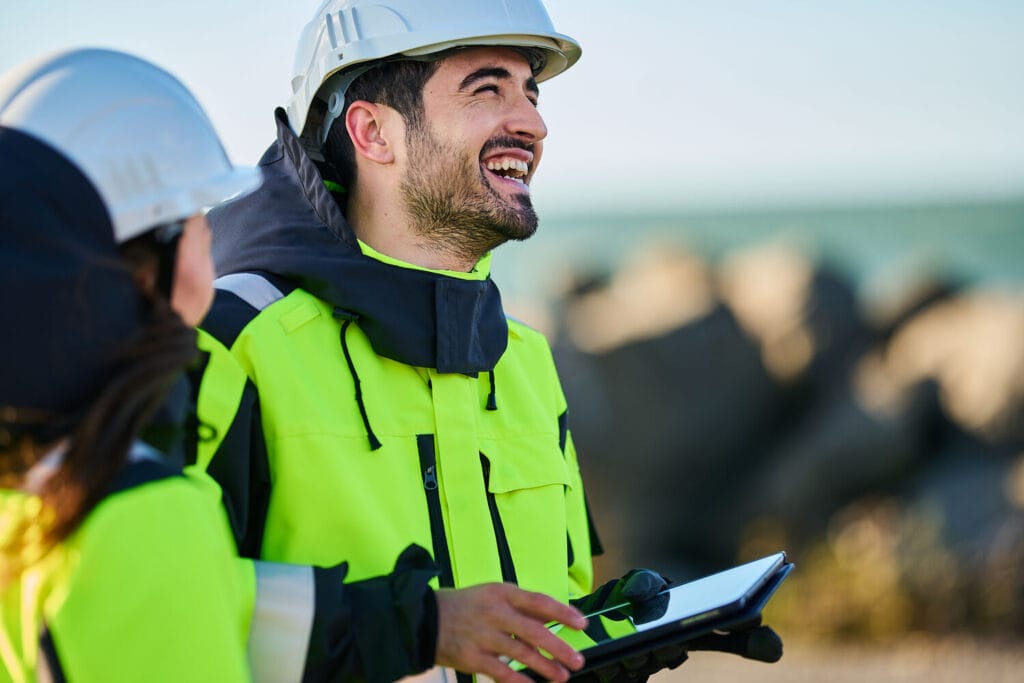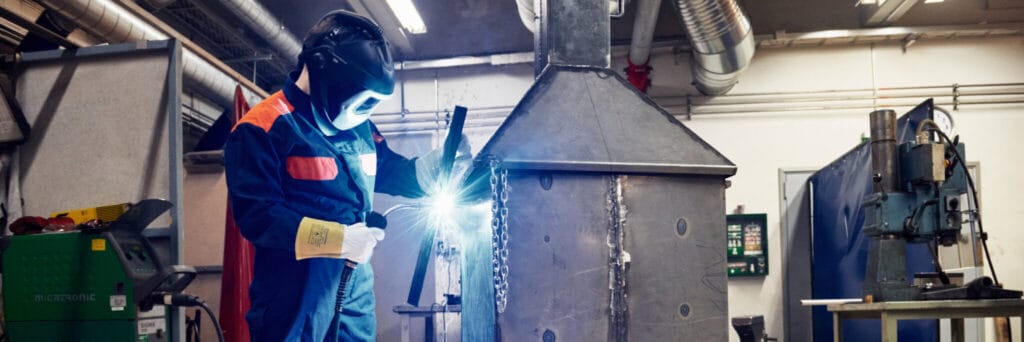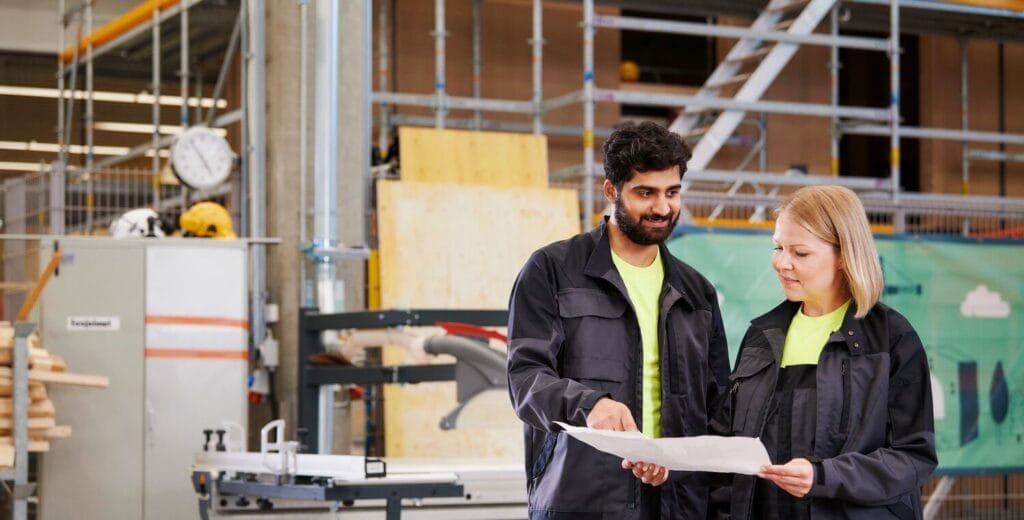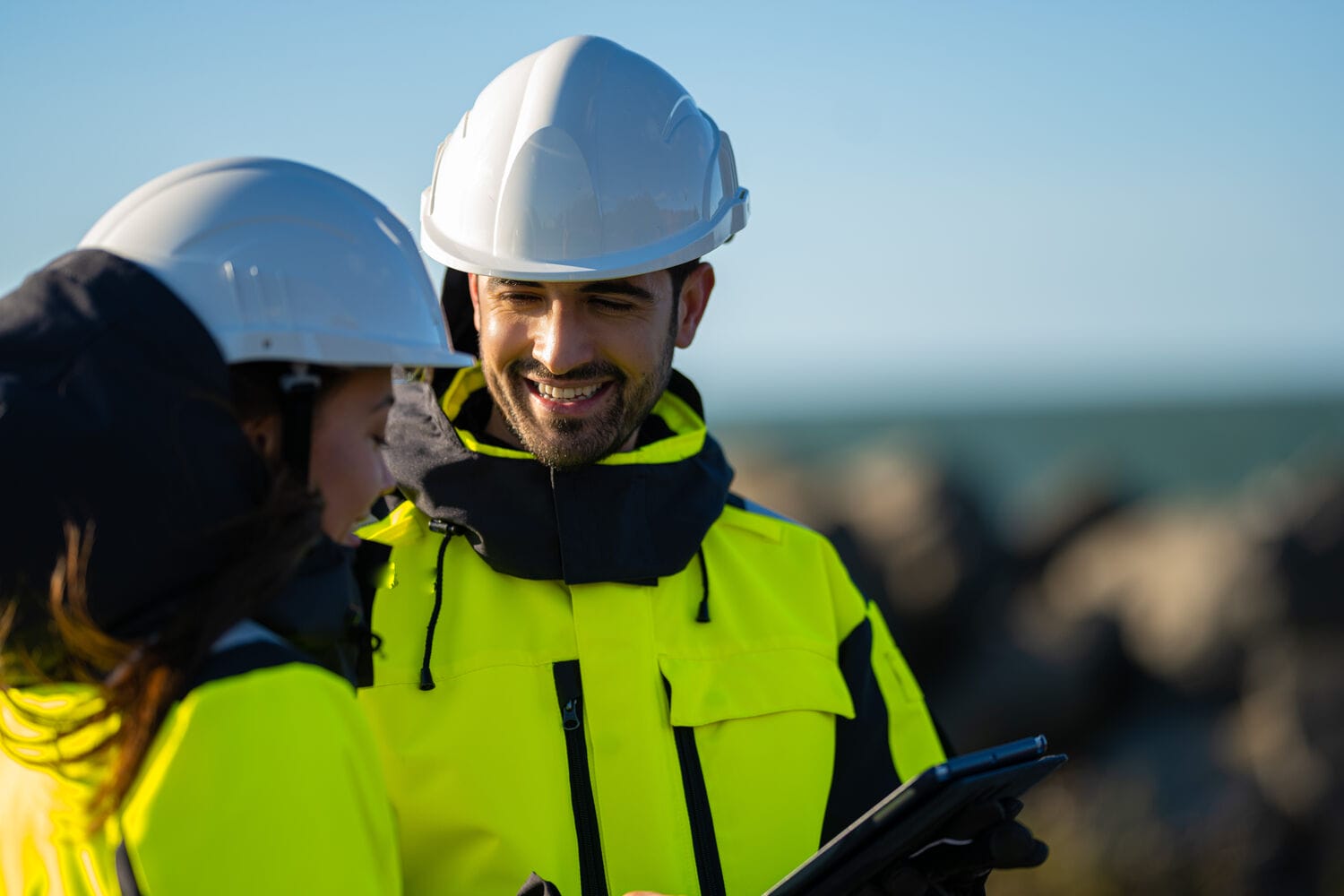
Choosing and managing PPE workwear: Practical expert advice
Choosing and managing PPE workwear can seem a daunting task. Think of a nursery teacher getting the kids dressed, ready to go and play outside. Now multiply the number of people by ten and add a variety of moving machinery, power tools and flying sparks. Oh, and there is a legal liability if you don’t do it right.
So, what is the best way to choose PPE workwear, and how can we maintain it to keep employees safe and legally compliant?
We spoke with a PPE workwear expert – Melissa George, Area Sales Manager for Lindström, UK, and she explained the key information you need to know.
How do I know what PPE workwear I need?
Each industry has specific regulations on PPE workwear. For example, food production companies are usually governed by strict international food safety regulations, requiring specific types of PPE clothing. Their regulations specify a type of clothing that must be supplied and used.
However, not everyone working in a company will have the same requirements. For example, not everyone will be handling food and therefore their needs may be different.
Your risk assessment will define the PPE legal requirements, but it’s important to know the requirements of each job, who is doing it, how often and when. Many companies overestimate their PPE needs and buy unnecessary workwear or workwear with too high a specification.
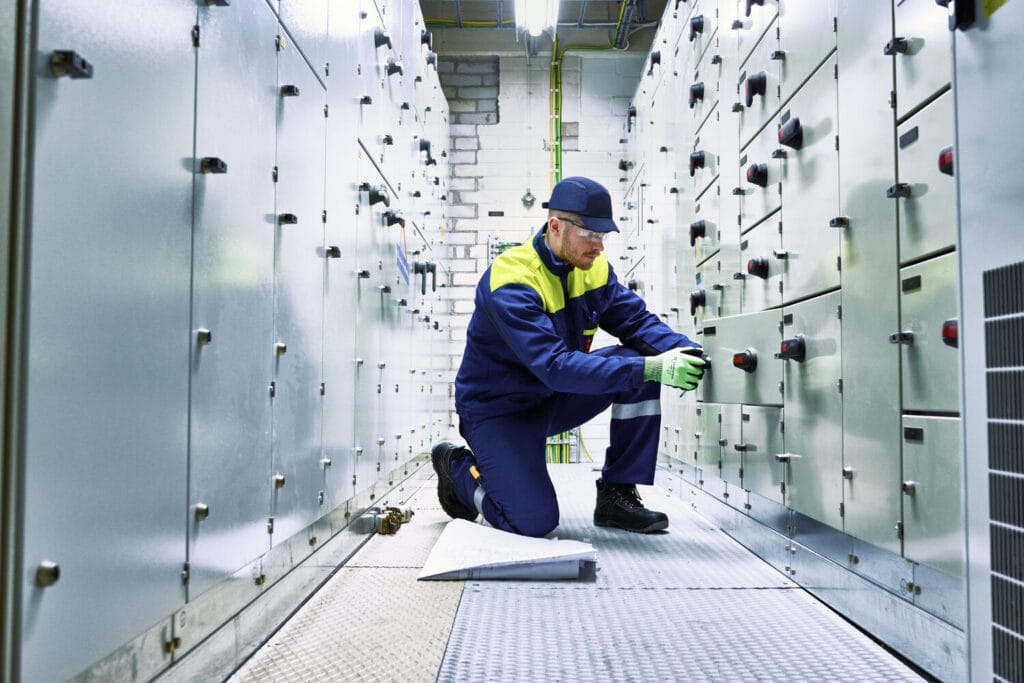
How do I define my company’s specific needs?
If possible, arrange a workwear site visit. Good workwear suppliers will have experts from different fields familiar with the relevant regulations. They will help you find the right workwear for the situations you face.
Melissa elaborates: “We will always go to site. We will meet with health and safety, production managers, end users and purchasing and then look around, because that’s the best way to see if the workwear they have is: (a) being used, (b) the correct workwear and (c) it gives us an idea of what we can propose based on our collection.
Sometimes we’ll get a request for a metal and machinery company that do some welding, and they ask for garments with chemical splash, anti static, welding, fire retardant and electric arc properties; and we ask, ‘Do you actually need all of these certifications?’ We can look at the risk assessment and if it’s just heat and flame protection, maybe all you need is a weld garment, so you don’t need to over spec.
Melissa George, Area Sales Manager
“I always say there’s no point putting everybody in the top-spec clothing if you’ve only got one designated wearer who needs the chem. splash or the electric arc. We can just give one employee a collection certified to the higher standards, and everyone else can stay in the welding only garment.”
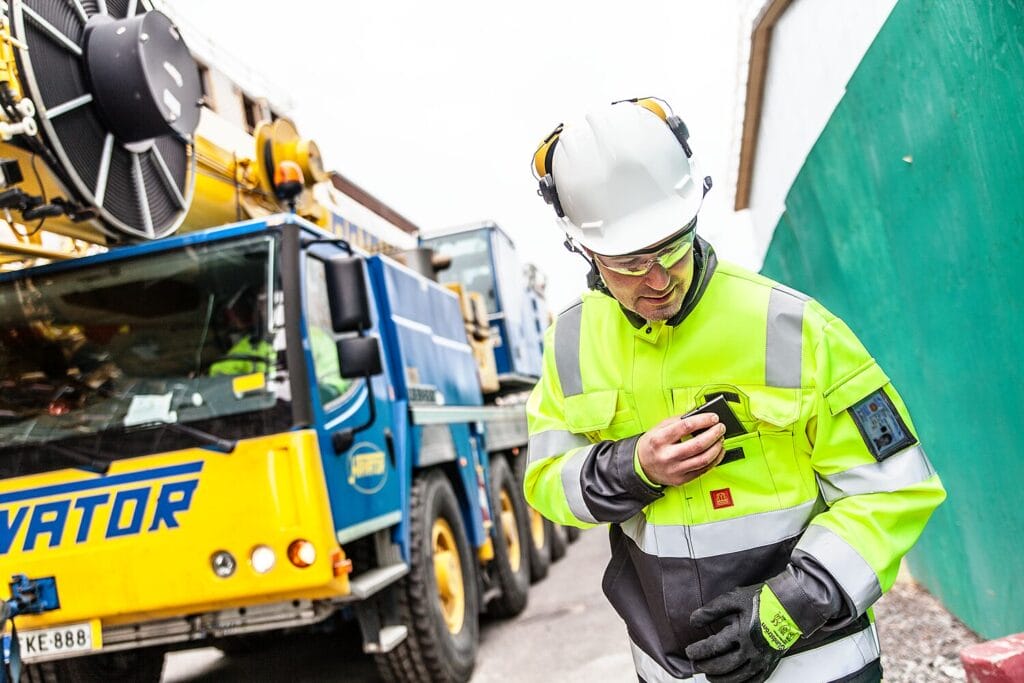
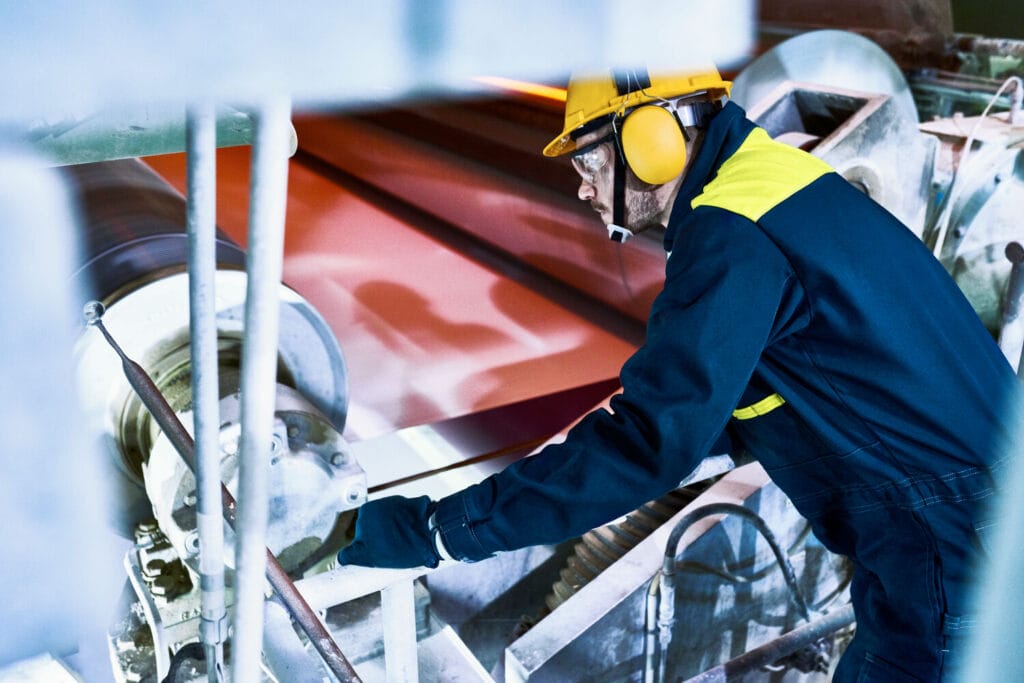

Do I need to order workwear specifically designed for my industry?
The answer is both yes and no. As a rule, workwear works best when designed specifically for you. But this is also more expensive. A good compromise is to find a supplier that has existing workwear available for the minimum specifications you need.
Melissa George tells how Lindström manages the situation: “A customer might come to us and say, ‘We want an orange and grey garment, but we can’t have an ID pocket on the sleeve.’ We might ask, ‘Is there any physical reason you can’t have that pocket? If not, fantastic, because then we’ve got a garment ready for you off the shelf that fits every single need you have, and it fits within your budget. However, if we design a product from scratch, the rental price is going to go up.
It’s always better to pick from what we have. Lindström puts a lot of effort into designing garments that are multifunctional across many different businesses, so we always have something for everyone, unless it is very niche.
Melissa George, Area Sales Manager
Do I need fitted garments?
Workwear that doesn’t fit can be dangerous for the wearer. It can tear, get caught, or simply won’t be worn, resulting in further risks and compliance issues for the employer and employees.
As Melissa explains, “If you’re working with cogs that move, and your jacket’s too big or not done up, it could get caught and the employee might get pulled into a machine. It must fit properly to protect them.”
When choosing workwear, make sure it is not too loose and not too tight. It is good when there is some air gap left between the garment and the skin. That way, sparks and spatter stay away from you. You should make sure the jacket overlaps the trouser waist, even when you are bending down, and check that your wrists and ankles are covered.
“If it’s too small and uncomfortable to wear,” says Melissa, “then, they might not wear it, and they’re leaving themselves open to an accident in the workplace.
“One final consideration is that if it doesn’t fit well, employees are not productive because they’re uncomfortable,” adds Melissa.
Can I share PPE workwear?
Sharing workwear is not recommended. Even if you happen to find your exact body double and the clothing fits both of you, there are a number of hygiene (and comfort) issues that can make the PPE workwear undesirable. Most importantly, having workwear in your own size makes work safe, and garments will feel more comfortable as well as last longer.
How are garments fitted?
Sometimes companies use a ‘drop pile’ or ‘pool’, where a few standard sizes of PPE workwear are supplied, and an employee takes what best fits / is available. This can be a convenient way to supply workwear, although care must be taken that suitable PPE workwear is available when needed.
A more focused alternative is a fitted service where the workwear supplier meets the customer and provides workwear for each user.
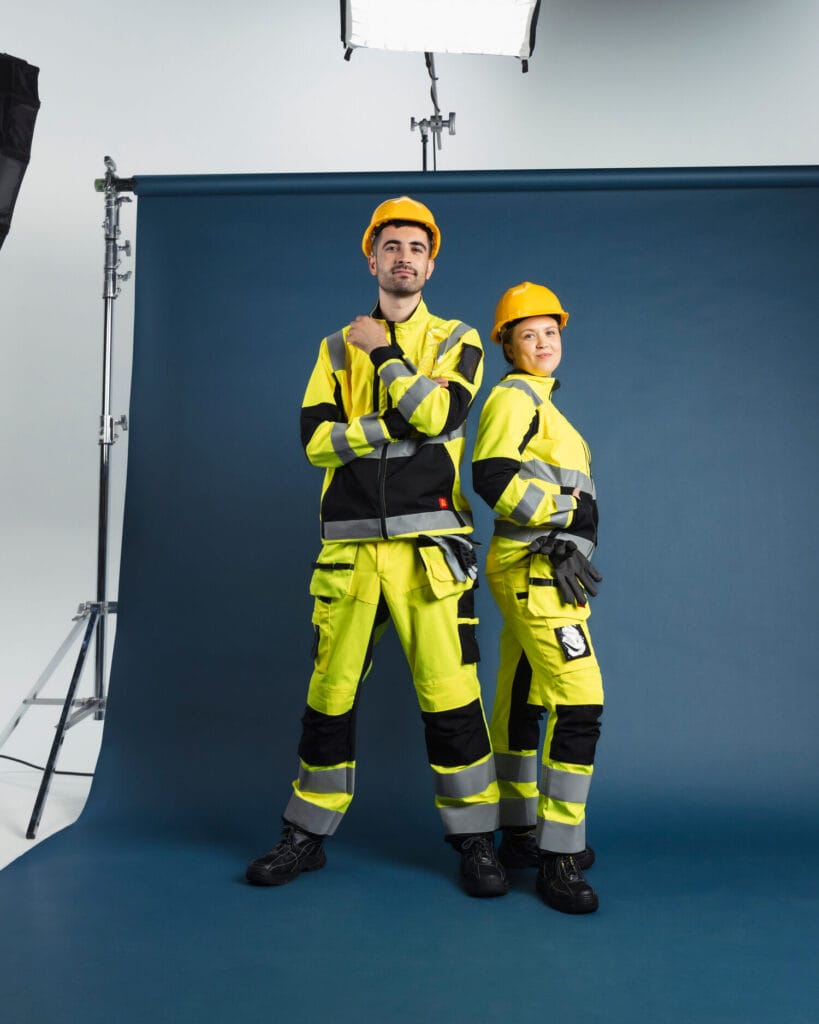
“We go out and we do the fitting,” says Melissa.
First, I’ll go and see a customer, propose some garments and then send some samples. Then, once we’ve signed the agreement, I will go back and physically measure their staff. We fit the legs and the arms to make sure they’re not too long or too short. If you have tall employees, they will get bespoke garments. Workwear will then be allocated to an employee, so they know exactly how many changes they have and how many garments they have. Furthermore, if they need to change the size later, they can return them to us for forward leasing.
Melissa George, Area Sales Manager
How do I take care of workwear PPE?
If PPE garments are not clean and in good condition, they cannot protect you properly. Dirty garments can be dangerous because they burn more easily. Regular changing, washing and maintenance are essential. If you buy the workwear, then you will have to organise the washing and repair. If you use a renting service, the washing and repair should be done for you.
How can you monitor the use and condition of PPE workwear?
The basic system is simply a manual record, relying on users and management to update workwear use. These days, many companies have technological solutions like an RFID chip which allows workwear use to be recorded, and the information easily presented on an online portal.
At Lindström we have RFID chips in all our garments. You can look at the eLindström portal and you see the wearer’s name, the alterations to the garments, how many washes it’s had, when it was last in the laundry, when it was last out of the laundry. You can do a repair-request there, send garments back, order new garments, add new wearers. It’s a lot easier for the customer to manage their account as its fully transparent.
Melissa George, Area Sales Manager
Tracking PPE workwear also helps compliance, especially over large teams where keeping tabs on use can be difficult.
“The manager of the production department can go on to eLindström and pick a random person and see the last time their garments were washed and how many they’ve got in circulation.
“What often happens is employees get new stuff, but they’ll always use the old, ‘favourite’ garments. They don’t rotate properly. But we can see this because the e-portal will show the same garment will be washed more often. We can go to the employee and explain they need to rotate their garments. It gives traceability on the user, and this helps keep the workwear in good condition.”
How many garments do I need?
A good rule of thumb is that clean garments are safe garments. “We recommend a minimum of two changes a week in dirtier areas because it prolongs the life of the garment. If they have five garments, they’ll have two to wear for the week, two of them will be in the wash and the spare one will be in their locker. If we find that they’re constantly using their spare one, then we know that we need to increase the number of garments that they have by one,” explains Melissa. How often the garments need to be changed and washed also depends on the job performed.
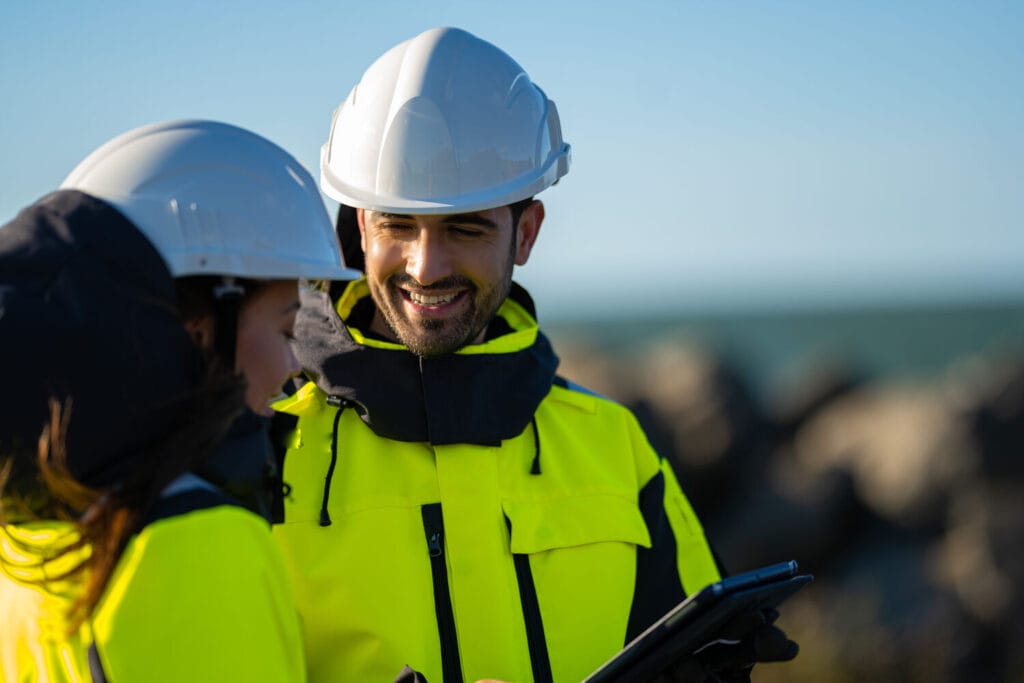
How do I choose a workwear supplier?
Workwear PPE is there to serve a purpose – to protect the user.
It needs to:
- Be up to standard.
- Be comfortable and appropriate.
- Be properly fitted.
- Have its use checked.
- Be regularly cleaned and repaired.
If these factors are not carefully considered, then the workwear will not protect the employee. This puts them, and the company, at risk.
“A lot of people don’t realise how much goes into workwear or PPE. This is why customers don’t change their PPE supplier very often”, says George.
“If you’ve got 200 staff members, they may be changing two or three times a week, and if ten of those staff come to you daily and say, ‘I haven’t got any workwear because it’s not been returned.’ Those are important work hours you have to spend managing and finding solutions.
Additionally, you must make sure that the risk assessment is up to date. You’ve got to make sure that everybody’s accounted for in the budget, that the workwear fits into the budget. It’s a lot of work. Nobody from a company likes dealing with workwear, except for us – we love it.
Melissa George, Area Sales Manager
“We are happy to do some hand holding when it comes to our customers because obviously, from our point of view, we want to give them the information they need and we want to show them that if they come to Lindstrom, they’re not going to have to deal with these complicated issues alone.”
Key takeaways:
| Start with a risk assessment | Identify specific hazards and avoid over‑specifying garments unnecessarily. |
| Get expert input | Site visits from knowledgeable suppliers help ensure workwear is fit for purpose and cost‑efficient. |
| Fit is critical | Poorly fitted garments can cause accidents, reduce comfort, and lower compliance. |
| Don’t share PPE | Personalised, well‑fitted garments are safer, more hygienic, and last longer. |
| Partner with the right supplier | Choose one who can provide ongoing support, regular maintenance, and transparent reporting. |
